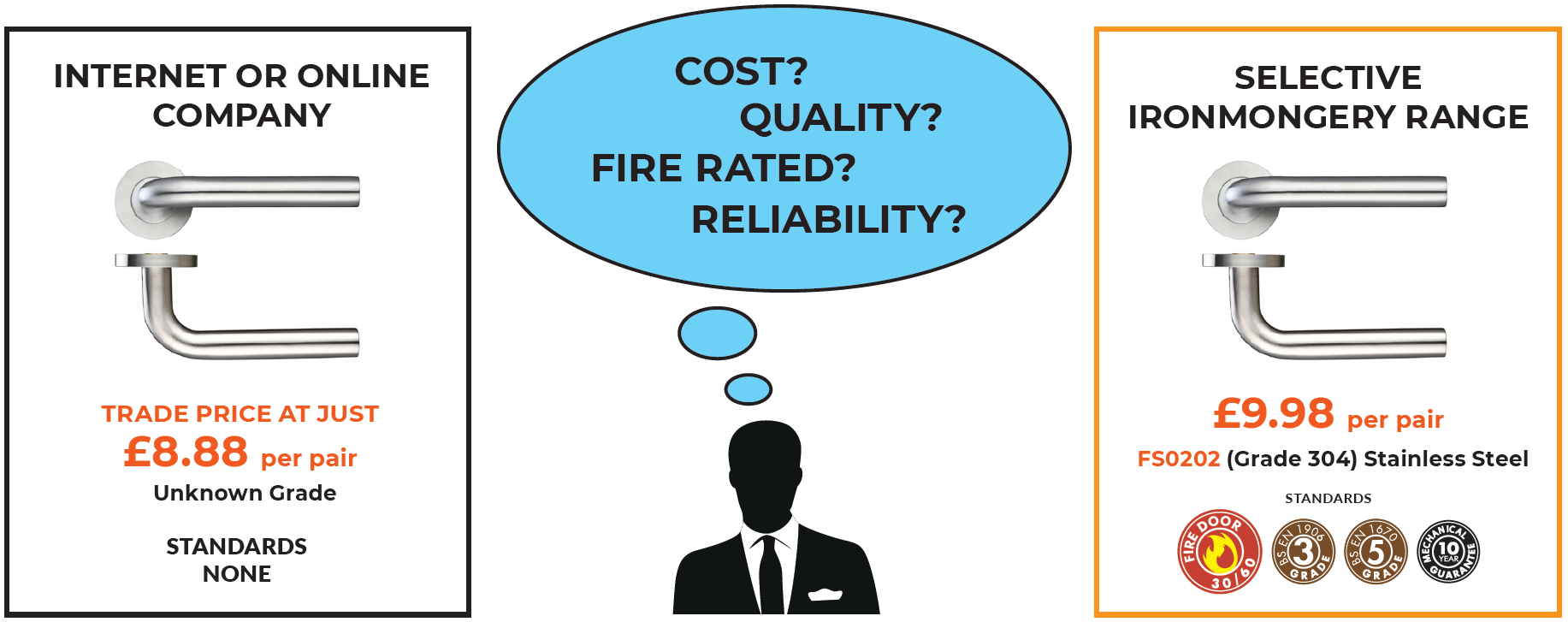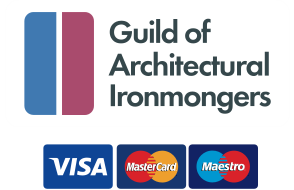Different Stainless Steel Grades Available

Does each CONFORM to a standard?
Have they been TESTED for use on Fire Doors?
Do you know the difference between the types of stainless steel available?
Stainless steel is an alloy of Iron and Chromium. It will also contain varying amounts of Carbon, Silicon and Manganese and, with certain grades, Nickel and/or Molybdenum may also be added to give the metal other useful properties.
The amount of each of these elements contained within the stainless steel will dictate its "grade", e.g.: 316, 304, 430. Each different grade will have varying qualities such as corrosion and stain resistance, weldability, reduced stress cracking tendencies, magnetism, etc. When selecting ironmongery and hardware fittings, you should therefore ensure the grade chosen is suitable for its purpose.
Detailed below is a brief explanation of the grades and their qualities.
Popular Stainless Steel Grades found within the Architectural Ironmongery Industry
Grade 316
This is also referred to as "Marine grade" and has excellent corrosion resistance. It is highly recommended for ironmongery to be fitted in an environment that has a high amount of corrosive elements, e.g. Coastal & Swimming pool areas or where the item will be consistently exposed to water.
The addition of Molybdenum within its contents prevents attacks from chemicals such as Chlorines and Chlorides. In view of its quality it tends to be more expensive than other grades of stainless steel.
Grade 304
This is the most common general purpose grade, being non-magnetic with good corrosion resistance. It is the ideal choice for all quality ironmongery, whether fitted internally or externally.
Grade 430
The lower Carbon content within this grade makes it a good, hardwearing material suitable for all internal applications. It can also be used externally, but will require regular maintenance to prevent contamination staining.
Grade 201
This is a durable, non-magnetic grade stainless steel and offers a more cost effective alternative for internal use than Grade 304. Having a lower Nickel content it may still be fitted externally, but only in relatively sheltered locations and will require regular maintenance.


